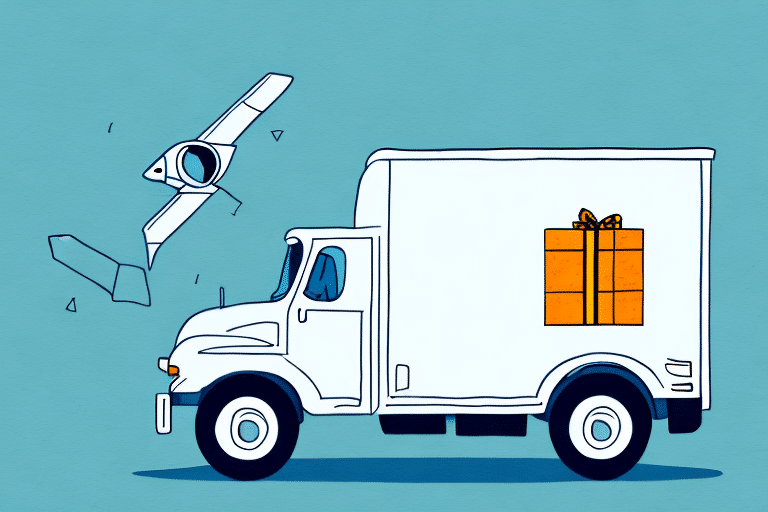Delivery Promises: A Secret Weapon for Ecommerce Growth
In the fast-paced world of ecommerce, customer expectations are always on the rise. As an online retailer, it's crucial to ensure that your customers have a positive shopping experience. One of the most effective ways to achieve this is by setting delivery promises that align with their expectations. In this article, we'll explore why delivery promises are essential to ecommerce growth, how they can improve your sales, the psychology behind delivery promises, and much more.
The Importance and Impact of Delivery Promises
The Importance of Setting Delivery Promises in Ecommerce
Setting clear and reliable delivery promises is essential for maintaining customer loyalty and growing your ecommerce business. In fact, a study by MetaPack found that 96% of shoppers consider delivery speed and reliability to be important factors in their purchasing decisions. By providing accurate delivery information and meeting customer expectations, you can foster trust and establish a reliable brand. In contrast, failing to meet delivery promises can lead to negative reviews, customer churn, and ultimately, lost revenue.
One way to ensure that you are meeting delivery promises is to use a reliable shipping carrier. Research different carriers and their delivery times to determine which one will work best for your business. Additionally, consider offering expedited shipping options for customers who need their items quickly. This can be a great way to differentiate your business from competitors and provide added value to your customers. By prioritizing delivery promises, you can create a positive customer experience and drive long-term success for your ecommerce business.
The Impact of Delivery Time on Customer Loyalty in Ecommerce
Delivery time is a crucial factor in customer loyalty for ecommerce. According to a survey by Dotcom Distribution, 87% of customers are likely to make repeat purchases from retailers who offer same-day or one-day delivery options. In contrast, slow delivery times can lead to lost sales and customers seeking out other retailers. By providing fast and reliable delivery options, you can build a loyal customer base and improve your revenue.
The Psychology Behind Delivery Promises and Customer Satisfaction
Delivery promises have a significant impact on customer satisfaction. When customers receive their orders within the expected timeframe, they feel valued and satisfied with their shopping experience. On the other hand, when delivery promises are not met, customers may become frustrated, angry, and less likely to make repeat purchases. The psychology behind this is related to the concept of expectations. Customers form specific expectations regarding the delivery of their orders based on past experiences, marketing messages, and other external factors. By setting and meeting delivery promises, you can exceed these expectations and strengthen the perception of your brand.
It is important to note that delivery promises not only affect customer satisfaction but also impact customer loyalty. When customers receive their orders on time, they are more likely to trust your brand and make repeat purchases. This is because timely delivery creates a sense of reliability and dependability, which are crucial factors in building long-term relationships with customers. On the other hand, delayed or failed deliveries can lead to negative word-of-mouth, which can harm your brand's reputation and result in lost sales. Therefore, it is essential to prioritize delivery promises and ensure that they are met consistently to maintain customer loyalty and satisfaction.
How Delivery Promises Can Boost Ecommerce Sales
In addition to improving customer satisfaction, delivery promises can also increase your ecommerce sales. By offering attractive delivery options such as free two-day shipping or same-day delivery, you can incentivize shoppers to make a purchase. Studies have shown that customers are more likely to buy from retailers who offer fast and reliable delivery options. By setting realistic yet impressive delivery promises, you can stand out from the competition and increase your sales.
Furthermore, delivery promises can also help reduce cart abandonment rates. When customers see that they can receive their purchases quickly and reliably, they are less likely to abandon their shopping carts out of frustration or impatience. This can lead to a significant increase in conversions and revenue for your ecommerce business. Additionally, offering delivery promises can help build trust and loyalty with your customers, as they will come to rely on your brand for timely and efficient delivery.
Measuring the Success of Your Delivery Promises: Key Metrics to Track
Tracking key performance indicators (KPIs) is essential to evaluating the success of your delivery promise strategy. Here are some metrics you should track to measure the effectiveness of your delivery promise strategy:
- On-time delivery rate
- Cost per delivery
- Customer satisfaction rate
- Number of deliveries per day/week/month
Strategies for Effective Delivery Promises
Top Strategies for Creating Effective Delivery Promises
Creating effective delivery promises requires careful planning and attention to detail. Here are some top strategies for setting realistic and reliable delivery promises:
- Use data analysis to determine the most popular delivery options and adjust your promises accordingly.
- Consider the lead time required for picking, packing, and shipping your products when setting delivery promises.
- Communicate transparently with your customers about any delays or issues that may affect their delivery time.
- Offer delivery options that align with your customers' preferences and expectations, such as same-day delivery or free shipping.
Another important strategy for creating effective delivery promises is to work closely with your shipping partners to ensure that they are able to meet your promised delivery times. This may involve negotiating service level agreements or implementing tracking and monitoring systems to ensure that your shipments are delivered on time.
It is also important to regularly review and update your delivery promises based on customer feedback and changing market conditions. This can help you stay competitive and ensure that your promises remain realistic and reliable over time.
Utilizing Technology for Reliable and Efficient Delivery Promises
Technology has revolutionized the way ecommerce retailers manage their logistics and fulfillment processes. By utilizing advanced software, analytics tools, and other technologies, you can improve the accuracy and reliability of your delivery promises. Some examples of technologies that can help you optimize your delivery process include:
- Inventory management systems
- Transportation management systems
- Route optimization software
- Real-time tracking systems
How to Communicate Delivery Promises to Customers Effectively
Effective communication is also critical when setting and fulfilling delivery promises. To ensure that your customers are well-informed about their delivery options and status, consider using the following methods:
- Sending automated emails or SMS messages about order confirmation, shipping status, and estimated delivery dates
- Providing a tracking number or link for customers to track their packages in real-time
- Offering customer service channels such as chatbots, phone support, or email for customers to reach out with questions or concerns
Another effective way to communicate delivery promises to customers is by providing clear and concise information on your website. This can include estimated delivery times based on location, shipping options and costs, and any potential delays or issues that may arise during the delivery process. By providing this information upfront, customers can make informed decisions about their purchases and have realistic expectations about when their items will arrive.
Avoiding Pitfalls and Adapting
Common Mistakes to Avoid When Making Delivery Promises
Making inaccurate delivery promises can damage the reputation of your brand and result in lost sales. Here are some common mistakes to avoid when setting delivery promises:
- Overpromising and underdelivering
- Not factoring in lead time for product handling and processing
- Not taking into account external factors that may affect delivery times, such as weather or traffic
- Not communicating with customers about delays or other issues that may arise
It is important to also consider the shipping carrier's delivery standards and policies when setting delivery promises. Each carrier has their own set of guidelines and delivery timeframes, which can vary depending on the shipping method and destination. Failing to take these into account can result in missed delivery promises and dissatisfied customers. It is recommended to research and understand the carrier's delivery standards before making any promises to customers.
Overcoming Challenges in Delivering on Your Promises
Challenges are a normal part of the ecommerce logistics process. Some of the most common challenges include transportation delays, inventory issues, and inclement weather. To overcome these challenges and deliver on your promises, consider implementing the following strategies:
- Building redundancy into your logistics network to mitigate the effects of transportation delays or other issues
- Monitoring weather conditions and adjusting delivery schedules as necessary
- Implementing a buffer time for inventory processing and handling to account for delays
Keeping Up with Changing Customer Expectations: Adapting Your Delivery Promise Strategy
As customer expectations continue to evolve, it's essential to stay up-to-date with the latest trends and preferences. Here are some strategies for adapting your delivery promise strategy to changing customer expectations:
- Continuously review and update your delivery promise options based on customer feedback and data analytics
- Stay informed about new technologies, such as drones or autonomous vehicles, that may revolutionize the ecommerce logistics industry
- Consider offering environmentally sustainable delivery options, such as electric vehicles or carbon offsets
Case Studies and Future Trends
Case Studies: Successful Ecommerce Companies and Their Delivery Promise Strategies
Looking at successful ecommerce companies and their delivery promise strategies can provide valuable insights into best practices. Here are some examples of successful ecommerce companies and how they have leveraged delivery promises to grow their businesses:
- Amazon Prime: Amazon Prime's two-day shipping promise is one of the most well-known and successful delivery promises in ecommerce. By offering free two-day shipping for millions of products, Amazon has incentivized customers to purchase more frequently and build loyalty to the brand.
- Walmart: Walmart's NextDay Delivery promise is a relatively new delivery option that provides free next-day delivery for eligible items. By offering fast and reliable delivery options, Walmart is building a competitive advantage over other retailers.
- Zappos: Zappos is known for its exceptional customer service, including its delivery promise strategy. Zappos offers free shipping and free returns for all orders, making it easy for customers to shop without worrying about additional costs.
Future Trends in Ecommerce Delivery Promises and Logistics
The future of ecommerce delivery promises and logistics is an exciting and rapidly evolving landscape. Here are some trends that are shaping the future of ecommerce delivery promises:
- Increased use of automation and robotics to streamline the picking and packing process, reducing delivery times and improving accuracy
- Expansion of same-day and one-day delivery options, driven by customer demand and advances in logistics technology
- Greater use of data analytics and machine learning to predict customer demand and optimize delivery routes
Conclusion
Setting reliable delivery promises is a secret weapon for ecommerce growth. By understanding the importance of delivery promises, utilizing effective strategies, and continuously adapting to changing customer expectations, you can build trust, improve customer loyalty, and ultimately grow your ecommerce business.






















